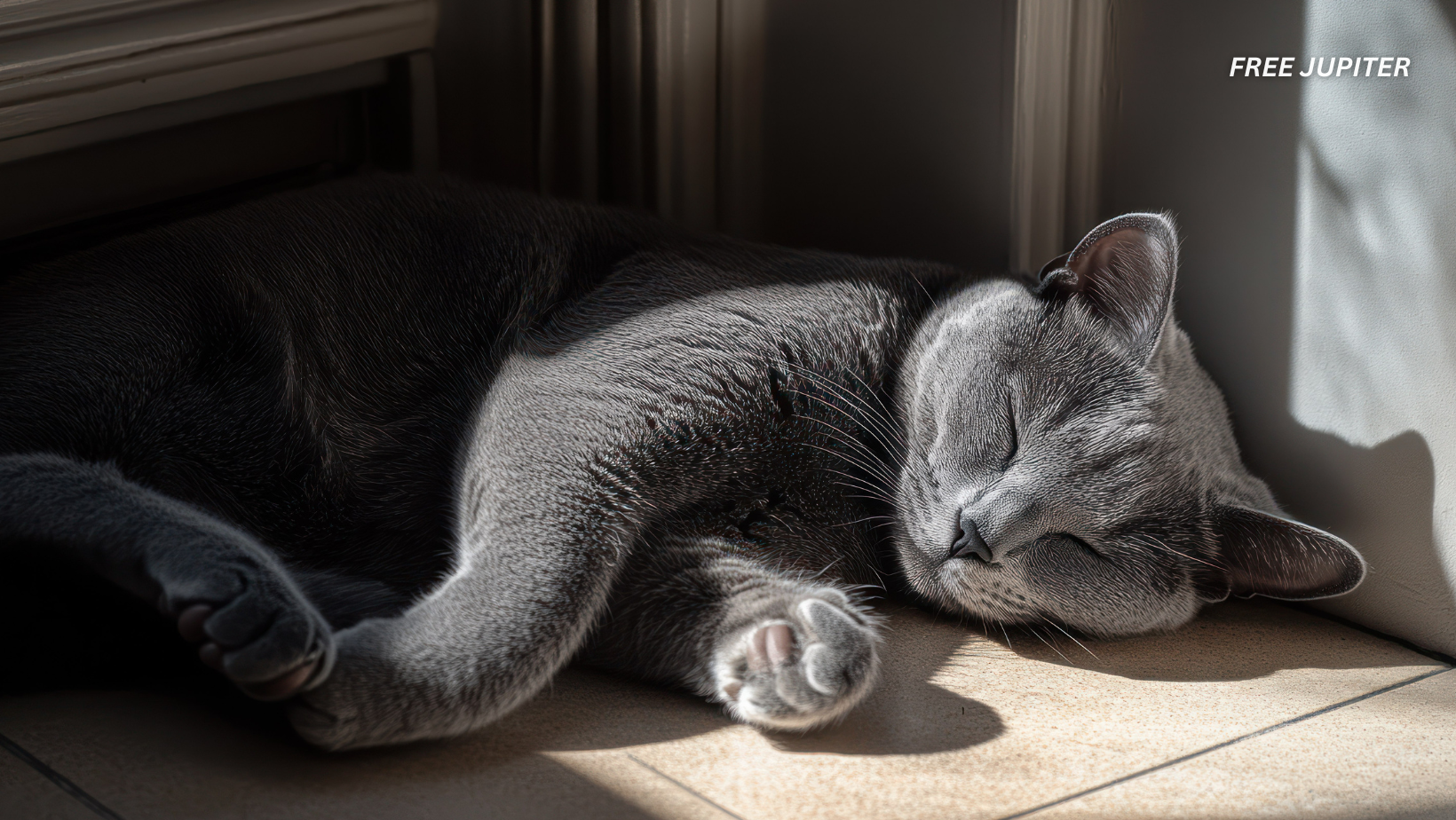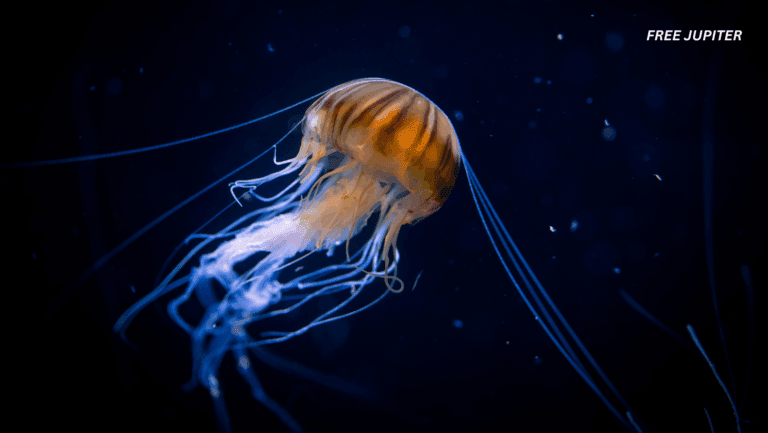Friendly Note: FreeJupiter.com shares general info for curious minds 🌟 Please fact-check all claims—and always check health matters with a professional 💙
If you’re a cat parent, you’ve probably witnessed your feline flopped over on the couch, bed, or sunny windowsill, deep in slumber. You may have even noticed a consistent pattern: your cat seems to favor one side—specifically, the left side—more than the other. Coincidence? Not likely.
Thanks to a new international study, scientists think they’ve figured out why our cats often choose this particular nap pose. And believe it or not, it has more to do with survival instincts and brain science than comfort or habit. The sleepy secret? Sleeping on the left side may help cats process potential danger faster when they wake up. Yep—there’s some serious evolutionary logic behind that little loaf on your living room rug.
Cats: Champions of Sleep and Strategy
First, let’s set the stage. Cats sleep—a lot. On average, they snooze anywhere from 12 to 16 hours a day, sometimes more if they’re older or feeling extra lazy. In fact, the only mammals that sleep more than cats are certain species of bats and sloths.
But this isn’t just indulgence. Sleep is essential for healing, brain function, and storing energy. However, it also comes with a catch: when you’re sleeping, you’re vulnerable. For wild cats especially, being unaware of your surroundings could be a death sentence. That’s why felines are notorious for choosing high perches, tucked-away corners, or sunny ledges where they can snooze safely with a wide view.
But according to this new study, it’s not just where they sleep that matters—it’s how they position their bodies.
The Study That Let the Cat Out of the Bag
A team of researchers from universities in Italy, Germany, Canada, Switzerland, and Turkey decided to explore this sleeping-side mystery using—you guessed it—YouTube videos. They analyzed 408 videos that showed cats lying on their sides, with clear visibility of the whole body for at least ten seconds. To keep things accurate, they only used videos that hadn’t been flipped, edited, or mirrored.
The results? Roughly two-thirds of the cats were lying on their left side.
Now, at first glance, that might not sound groundbreaking. But here’s where it gets fascinating: this preference may be linked to how their brains process visual information when they wake up.
Read more: New Bill to Ban Cat Declawing Advances in California—Full Ban One Step Closer
Left Side Down, Right Brain Up
When a cat sleeps on its left side, its left visual field—everything the left eye can see—becomes the first thing it takes in upon waking. That sensory information gets sent directly to the right hemisphere of the brain, which happens to be a powerhouse for detecting threats, managing spatial awareness, and triggering quick escape responses.
In other words, if something dangerous is nearby (a predator, an angry dog, or even just a noisy vacuum cleaner), the cat’s right brain is better equipped to make a fast decision and help it leap to safety—or bolt under the couch. It’s like having a built-in radar system wired to the brain’s emergency response center.
So, this left-side sleeping position may have evolved over time as a survival strategy. By lying this way, cats essentially give themselves a neurological advantage the moment they wake up.
What’s So Special About the Brain’s Right Side?
The idea that each side of the brain has its own specialty isn’t new. In fact, many animals—including humans—show something called lateralization, where one hemisphere of the brain is better at certain tasks than the other.
For example:
- The left hemisphere tends to handle routine tasks and structured actions like planning, problem-solving, and language in humans.
- The right hemisphere is typically more alert to novelty, danger, emotion, and quick reaction tasks.
This division of labor allows the brain to multitask more efficiently. And in animals like cats, that can mean the difference between catching dinner or becoming dinner.
So, a cat lying on its left side isn’t just taking a cute nap. It’s unconsciously prepping its right brain to kick into action in case something unexpected happens.
Read more: Killer Whales Are Getting Smarter—And Their Behavior Is Becoming More Alarming
Do Other Animals Do This Too?
Interestingly, this kind of side-preference isn’t unique to cats. Many animals exhibit lateralized behaviors:
- Dogs have been shown to wag their tails more to the right or left depending on their emotions.
- Horses tend to look at threatening stimuli with their left eye.
- Even birds, like pigeons, process spatial information more effectively with one eye over the other.
And yes, humans do it too—most people are right-handed, which is controlled by the left side of the brain. But when it comes to reacting to sudden sounds or danger, our right brain jumps into action. So in a way, cats might be wired in a surprisingly human-like way when it comes to survival instincts.
More Than Just a Quirk: Implications for Behavior and Health
Understanding how and why cats sleep the way they do could have wider implications than you’d think. For one, it opens up questions about how stress, age, or illness might affect their sleep posture. Could a change in side preference signal something neurological? Might it reveal pain on one side of the body?
Veterinarians and animal behaviorists could potentially use this knowledge as another tool in assessing feline health. For example, a cat suddenly avoiding its usual sleeping position might be trying to compensate for discomfort or injury.
And for everyday cat owners? It just gives us one more reason to marvel at how cleverly designed and instinct-driven our pets truly are.
Read more: Meet the Tiny Dog-Sized Dinosaur That Could Outrun Anything in the Jurassic Era
Final Thoughts: Cats Don’t Just Sleep—They Strategize
So the next time you see your cat curled up on its left side, don’t assume it’s just being lazy or cozy. That little furball is engaging in an age-old survival strategy—one shaped by evolution, fine-tuned by the brain, and quietly working behind the scenes even as it dreams of chasing birds or batting at invisible enemies.
In a world where comfort meets cunning, cats continue to surprise us with their subtle brilliance. They may not always show it, but behind those sleepy yawns and twitching whiskers lies a mind always ready for action.
And now, thanks to science (and a whole lot of cat videos), we finally understand one more sliver of their mysterious behavior.










